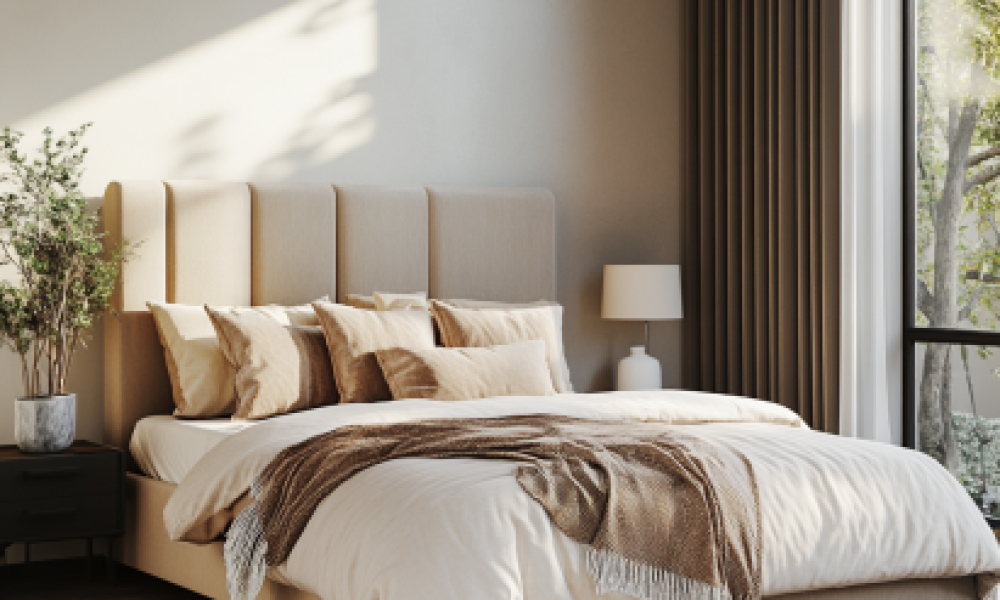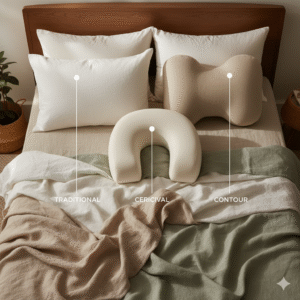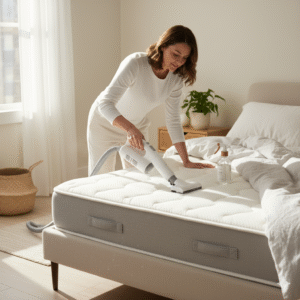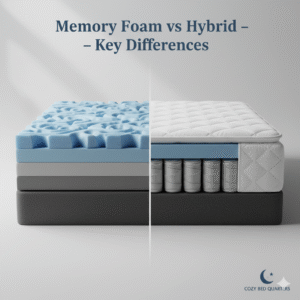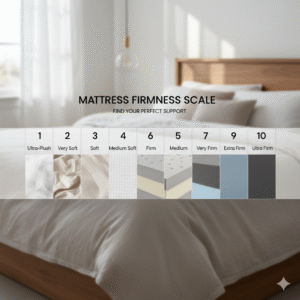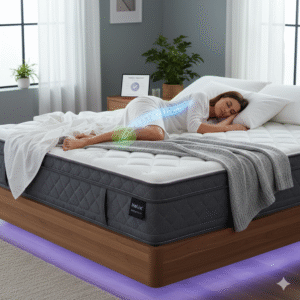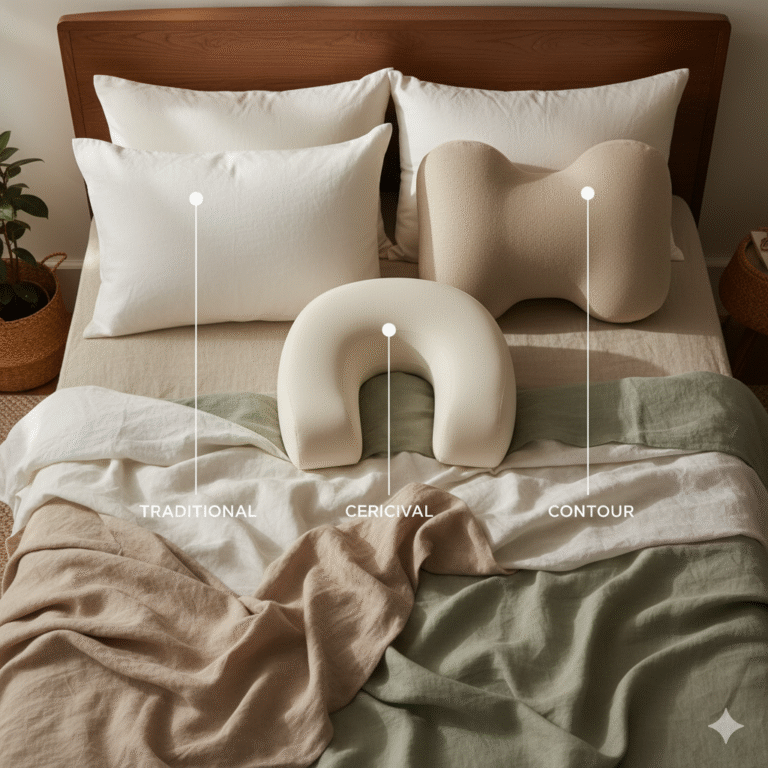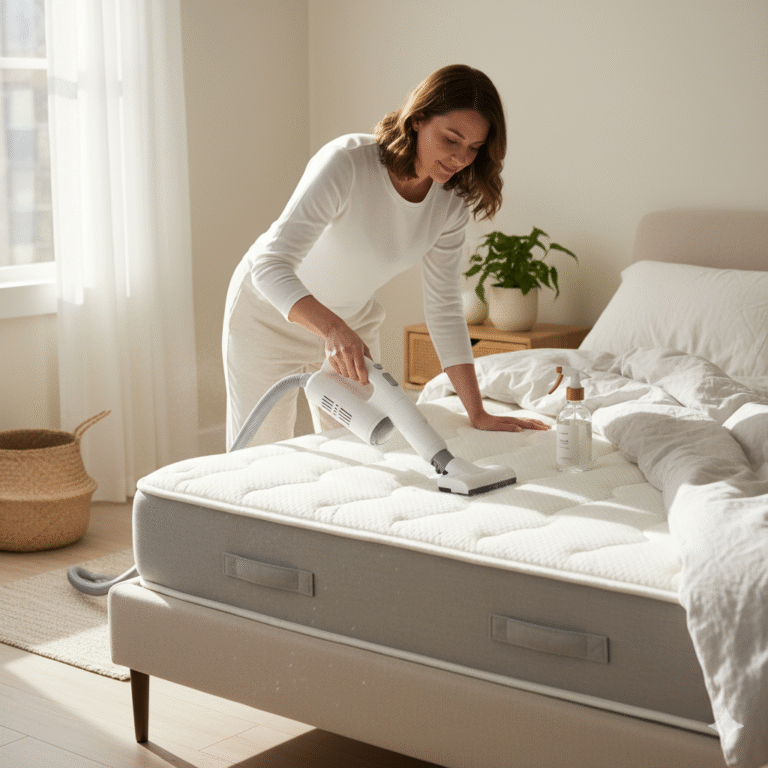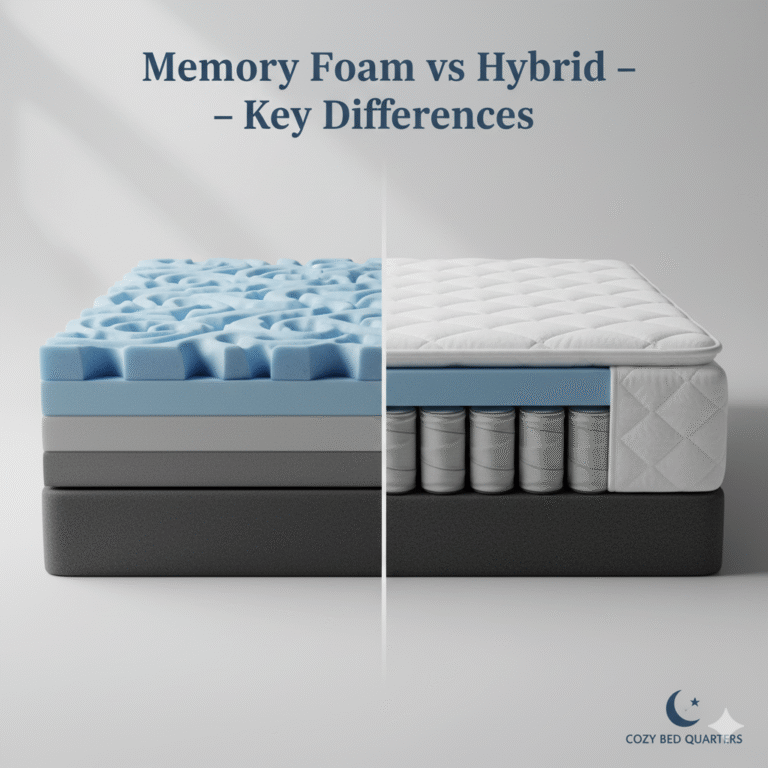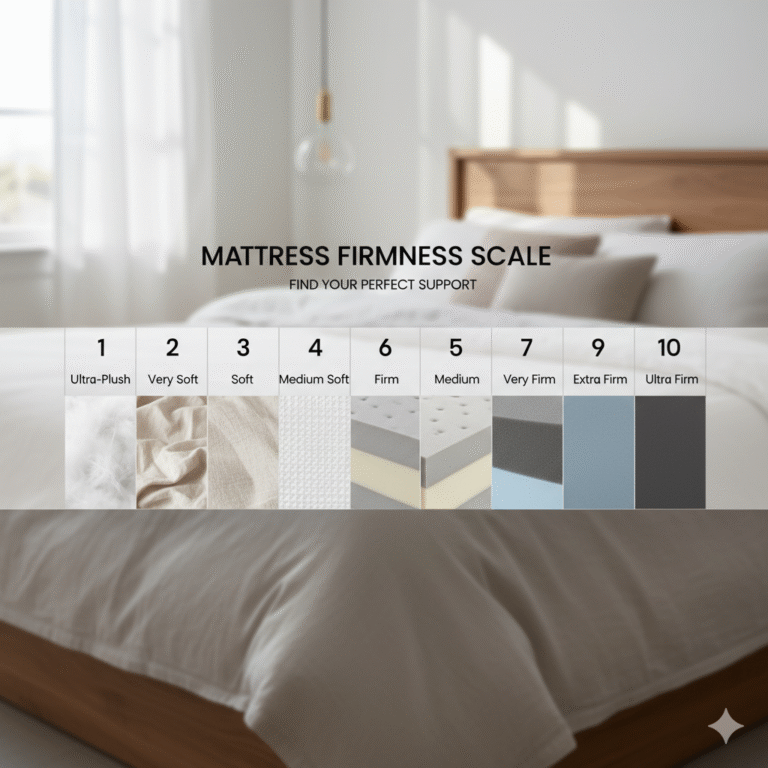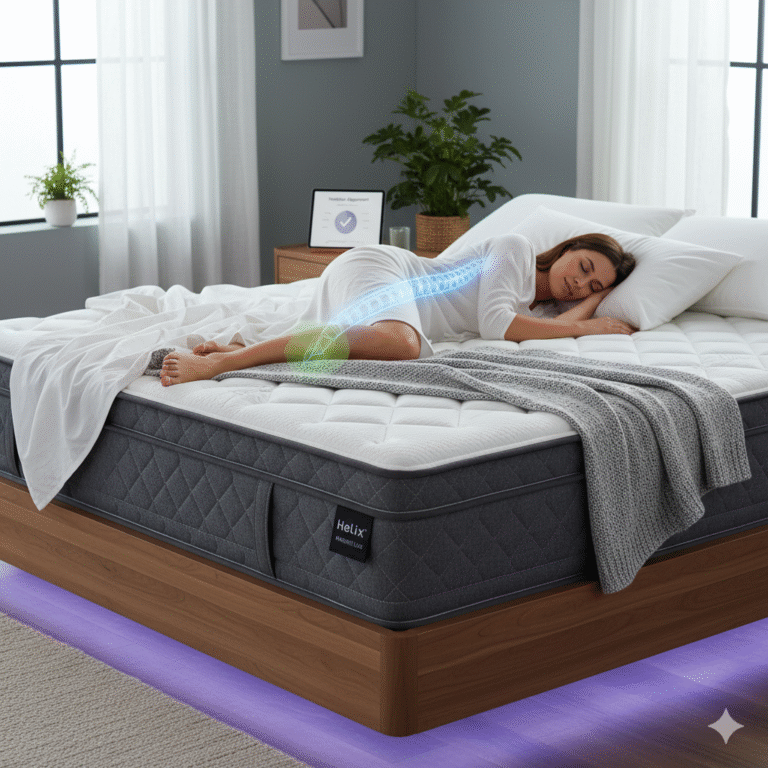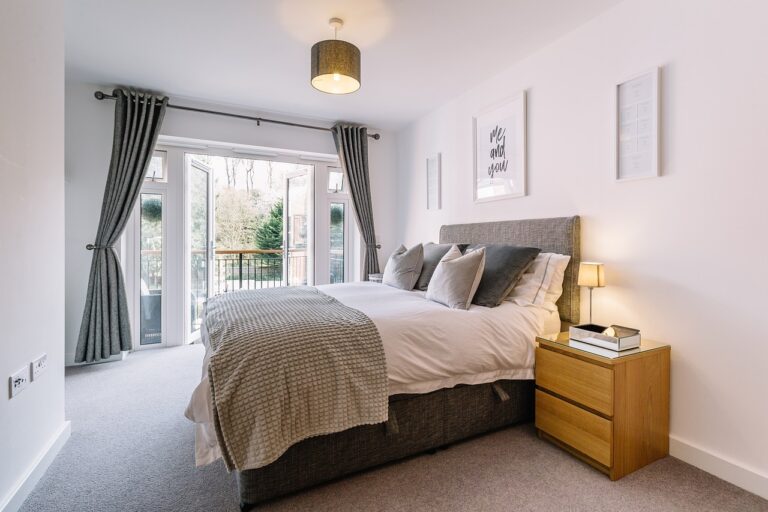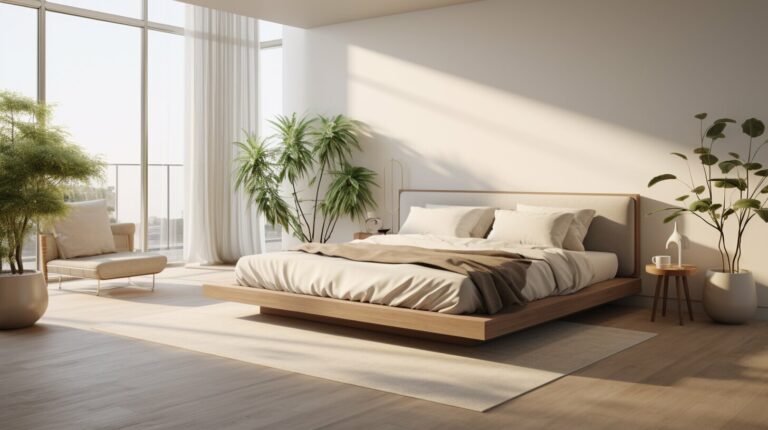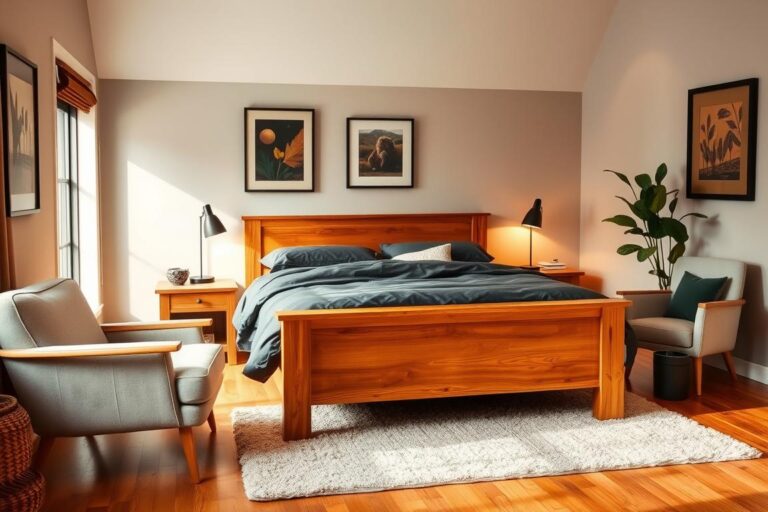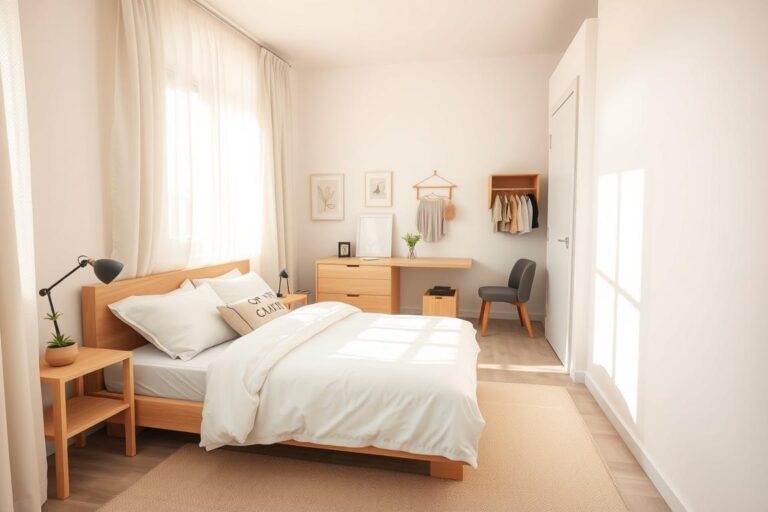Choosing the Right Mattress Size for Your Bedroom
Choosing the Right Mattress Size affects comfort, traffic flow, and how your furniture fits. In this warm, no-fluff guide you’ll measure your room, compare standard dimensions, and match a mattress to your daily routines. For expert references, see the
Sleep Foundation best mattress guide and
Better Homes & Gardens mattress buying guide.
Key Takeaways: Choosing the Right Mattress Size
- Measure first. Sketch your layout and leave 24–36 inches of walkway on the bed’s usable sides.
- Room-to-bed balance. Don’t let the frame crowd doors, closets, or windows; scale the headboard to ceiling height.
- Lifestyle fit. Couples often prefer Queen or King; families or pet parents may lean King/California King.
- Budget the ecosystem. Bigger beds need bigger frames, bedding, and pillows—plan for total cost, not just the mattress.
- Start with the data. Use a standard size chart to compare dimensions before you fall in love with a frame.

Choosing the Right Mattress Size: Measuring Your Bedroom Space
Start with the layout, then confirm clearances.
Begin by mapping the room on paper (or your phone) and plotting doors, closets, and windows. Next, check you can keep 24–36 inches of walking space on the sides you actually use.
- Measure wall-to-wall. Note length and width, plus ceiling height if you want a tall headboard.
- Account for furniture. Nightstands need 18–24 inches each; dressers need door swing and standing room.
- Check traffic flow. Make sure doors, drawers, and closets open freely without hitting the frame.
- Think outlets & lighting. Keep access to outlets for lamps, chargers, and adjustable bases.
For a quick reference while planning, compare standard sizes with the Sleep Foundation’s dimensions overview:
mattress sizes & measurements.
Helpful companion from our library:
How Bed Size and Sleep Quality Are Connected.
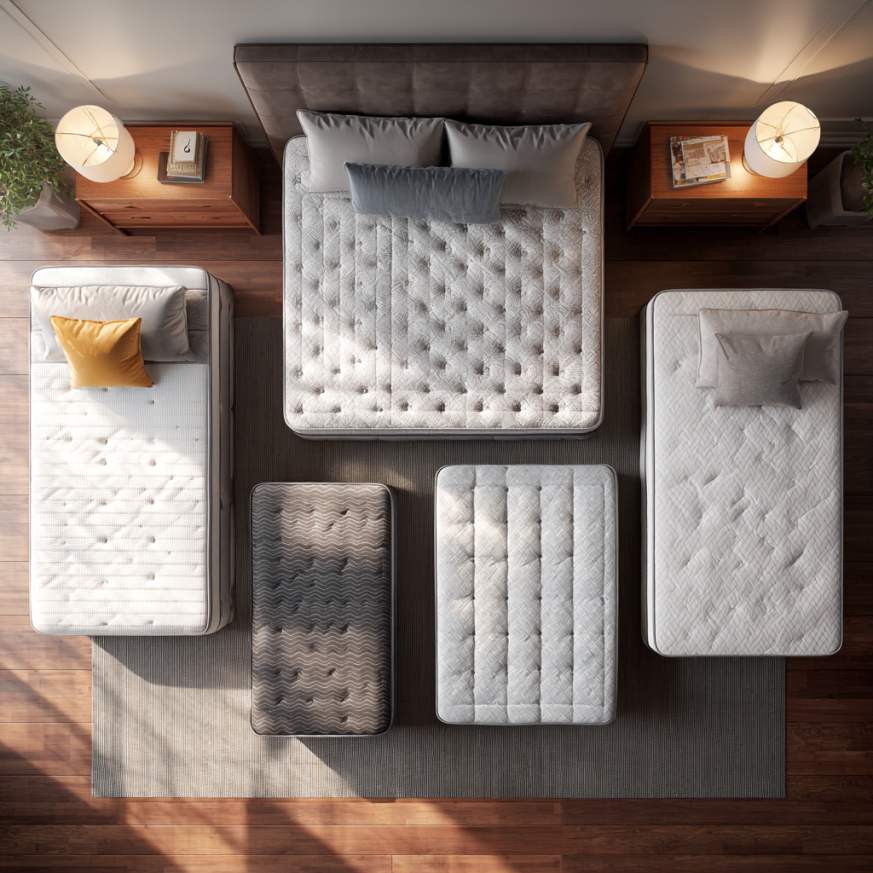
Choosing the Right Mattress Size: Mattress Size Comparison Chart
Use the chart to narrow to one or two likely sizes.
Match your floor plan to the standard dimensions below. These “recommended room sizes” assume at least one usable walkway and a pair of modest nightstands.
| Mattress Size | Dimensions (inches) | Recommended Room Size | Best For |
|---|---|---|---|
| Twin | 38 × 75 | 7′ × 10′ | Kids, small guest rooms, tight studios |
| Twin XL | 38 × 80 | 8′ × 10′ | Taller teens or solo sleepers in narrow rooms |
| Full | 54 × 75 | 9′ × 10′ | Solo sleepers who want extra space in small rooms |
| Queen | 60 × 80 | 10′ × 10′ | Most couples, or solo sleepers who starfish |
| King | 76 × 80 | 12′ × 12′ | Couples who want maximum width |
| California King | 72 × 84 | 12′ × 14′ | Tall sleepers, couples with pets at the foot |
Need bedding to match? Parachute’s size guides make sheet and duvet sizing simple:
fitted sheet guide and
duvet cover guide.
Plan your research next: the
Sleep Foundation best mattress shortlist gives a broad sense of options across firmness and budget.
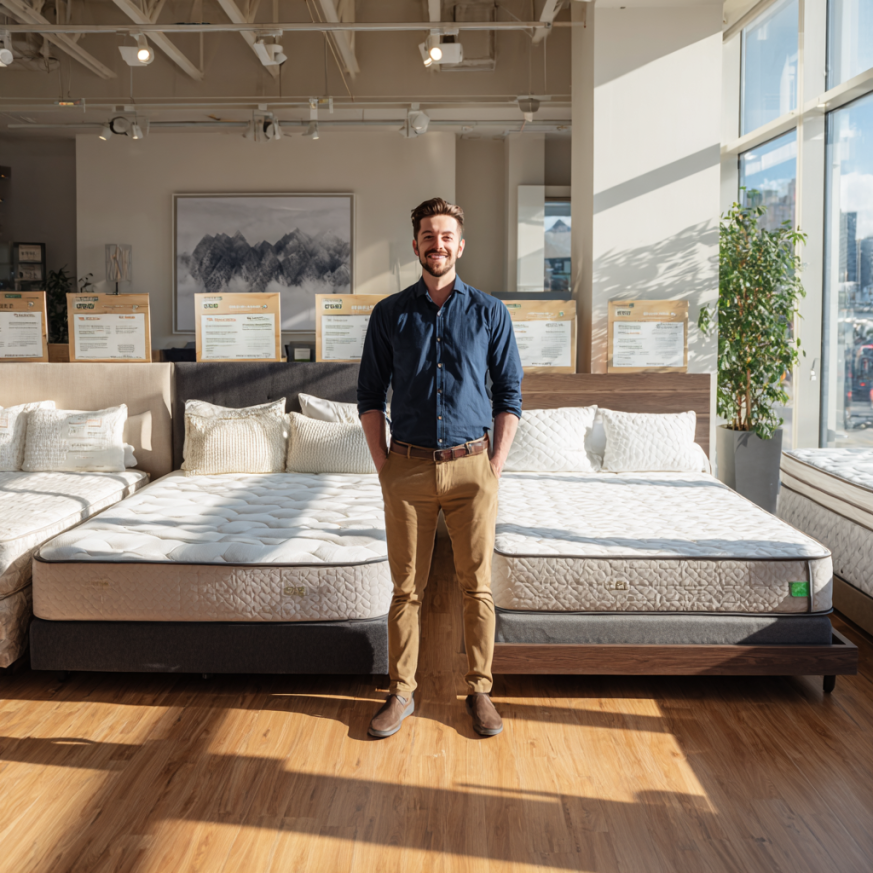
Choosing the Right Mattress Size: Matching Your Mattress to Your Lifestyle Needs
Pick the size that supports how you actually sleep.
Your habits, height, and household matter as much as square footage. Couples who toss may want more width, while tall sleepers benefit from extra length.
- Couples. Queen is the minimum; King adds breathing room for restless sleepers. Compare specifics in
Queen vs. King. - Solo sleepers. Full or Queen balances comfort with floor space.
- Families & pets. King or California King to avoid nightly elbow negotiations.
- Tall sleepers. Twin XL for compact rooms, or California King for couples.
- Small apartments. Twin, Twin XL, or Full keeps traffic flowing.
- Guest rooms. Full or Queen accommodates most visitors.
Lifestyle-Based Mattress Recommendations
Use this quick table as your short list, then validate against your measurements.
| Lifestyle Need | Recommended Mattress Size | Notes |
|---|---|---|
| Solo sleeper | Twin, Full, Queen | Consider shoulder room if you rotate positions overnight. |
| Couples | Queen, King, Cal King | Wider beds reduce motion transfer feelings and elbow contact. |
| Tall individuals | Twin XL, Cal King | Twin XL and Cal King add crucial foot length. |
| Families with kids/pets | King, Cal King | Extra width or length keeps everyone comfortable on weekend mornings. |
| Small spaces | Twin, Twin XL, Full | Maximize vertical storage to keep walkways clear. |
| Guest room | Full, Queen | Most flexible pairing with common headboard widths. |
| College dorm | Twin XL | Standard in dorms; easy to find bedding. |
Related reads from our library:
Length of a Queen Size Bed Frame and
King Size Bed Measurements.
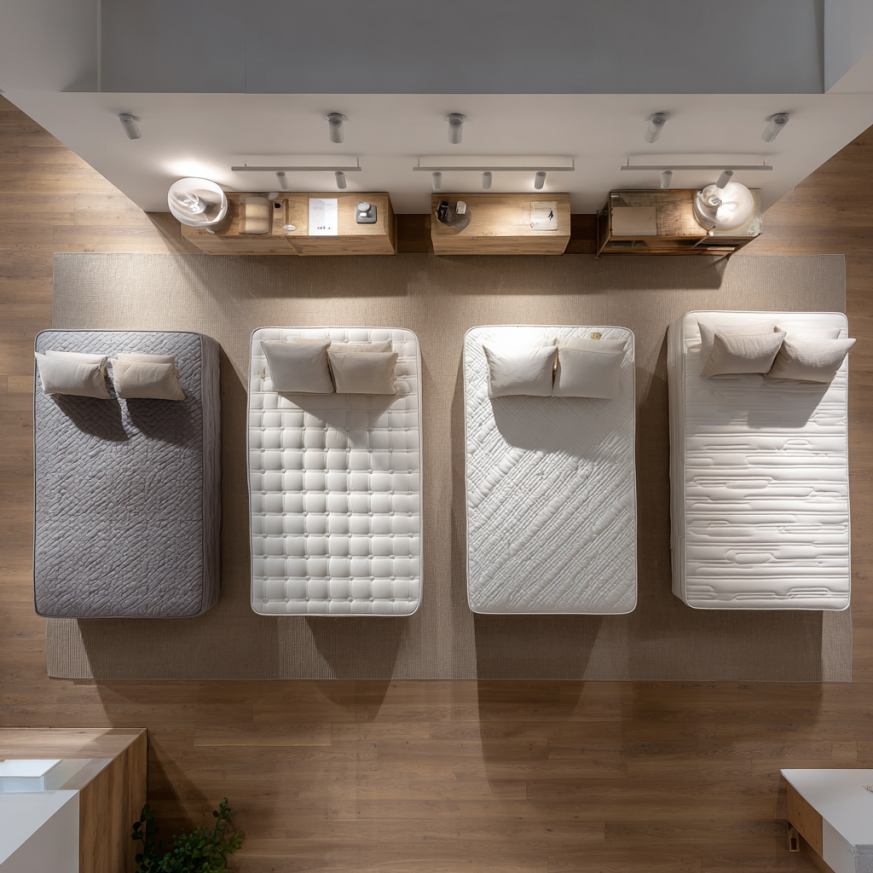
Choosing the Right Mattress Size: Additional Considerations
Think beyond the mattress—consider the whole setup.
Height, base type, and budget all influence comfort and daily use. Measuring the total height (frame + foundation + mattress) helps avoid “climb-into-bed” situations.
- Mattress thickness. Thicker models add plushness but may require deep-pocket sheets; check the fitted sheet depth before buying.
- Bed frame compatibility. Platform, slatted, and adjustable bases can change feel and overall height.
- Storage needs. Low-profile beds trade under-bed bins for a sleeker look; plan alternatives if you need storage.
- Budget considerations. Bigger sizes raise costs for frames, pillows, and bedding—price the ecosystem, not only the mattress.
- Sleeping position & firmness. Side sleepers often appreciate more shoulder room; back/stomach sleepers may favor firmer support. Start here:
how to choose a mattress.
Planning a full refresh? See our overview:
Complete Guide to Bed Sizes: 7 Key Factors.
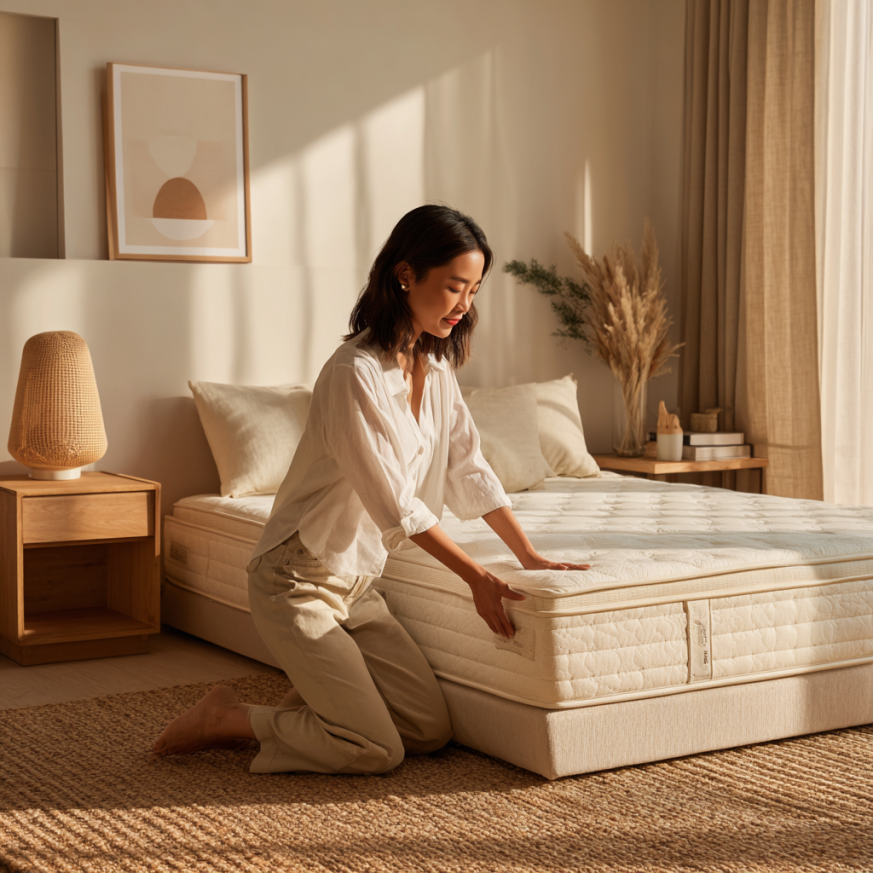
Eco-Friendly vs. Conventional Bedding: What Matters with Mattress Size?
Size choices affect the cost and footprint of your bedding set.
The larger the mattress, the more fabric and fill your sheets, duvets, and protectors require. If you’re upgrading sizes, budget for sustainable choices to keep quality high and waste low.
- Materials. Organic bedding and eco-conscious sheets (like organic cotton or linen) breathe well and last longer when cared for properly.
- Certifications 101. Look for OEKO-TEX® STANDARD 100 or GOTS for textiles, and CertiPUR-US® for foam layers in compatible mattress toppers.
- Longevity. Sustainable bedding often uses denser weaves and durable fibers, which can offset a higher upfront price across Queen and King sets.
- Care & fit. Check fitted sheet depth for thicker mattresses; eco lines provide detailed size charts like
this Parachute guide.

Buyer’s Guide: A Simple Process for Choosing the Right Mattress Size
Decide, test, and then finalize your ecosystem.
- Measure and sketch. Note bed wall, doors, closet, windows, and outlet locations.
- Shortlist two sizes. Use the chart above to pick a primary and a fallback.
- Mock-up with painter’s tape. Tape the footprint and walk the space.
- Check height and storage. Add up frame + foundation + mattress and confirm drawer clearance.
- Confirm bedding fit. Review fitted sheet pocket depth and duvet dimensions for your chosen size.
- Validate budget.</-li>
- Read a trusted shortlist. Start with the
Sleep Foundation best mattress guide to match size and firmness.
Need style guidance once you pick a size? Explore rug pairing tips for scale:
Perfect Rug Size for a Queen Bed.
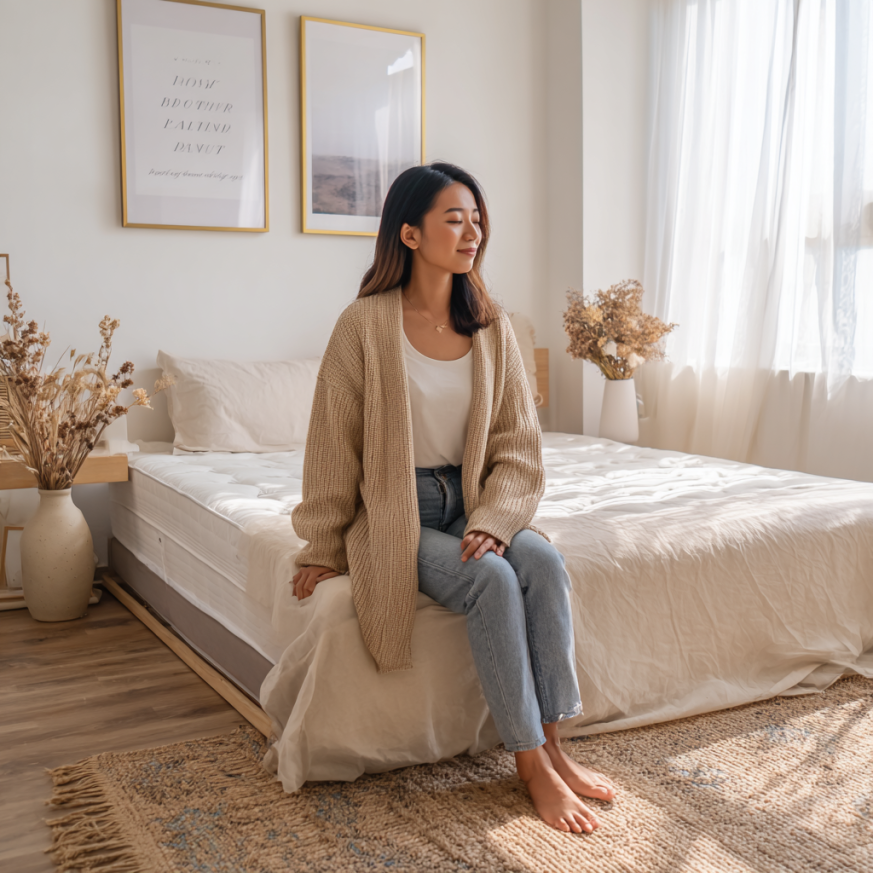
Choosing the Right Mattress Size: Final Thoughts
Comfort is a mix of dimensions, daily life, and budget.
Choosing the Right Mattress Size comes down to the room’s realities and your routines. Measure carefully, tape the footprint, and plan accessories around the total setup. For more bed-size planning and layout tips, explore our in-depth guides here on Cozy Bed Quarters.
FAQ
- What is the most popular mattress size?
- Queen is the most popular because it balances cost, comfort, and space for most couples and solo sleepers.
- How much space should I leave around a bed?
- Aim for 24–36 inches of clearance on the usable sides so doors and drawers open comfortably.
- Is a King bed too big for a 10×10 room?
- Usually yes. A King works best in rooms around 12×12 or larger to preserve walkways and furniture access.
- How do King and California King differ?
- King is wider (76×80) for elbow room; California King is longer (72×84) for taller sleepers and pets at the foot.
- Do thicker mattresses change which size I should buy?
- Not the length/width, but total height affects comfort and bedding choices. Confirm fitted sheet pocket depth for thicker builds.
Related Reading
From Cozy Bed Quarters
- Complete Guide to Bed Sizes: 7 Key Factors
- King Size Bed Measurements
- How Bed Size and Sleep Quality Are Connected

